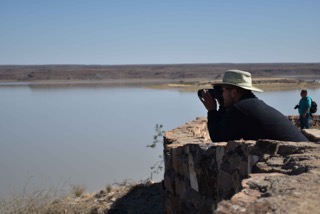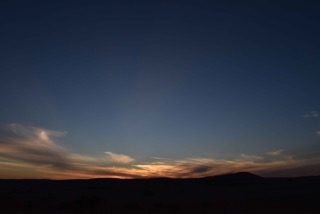Land in Namibia can be classified as privately-owned or communal land. According to NACSO, Namibian Association of CBNRM Support Organizations, “Communal Based Natural Resource Management (CBNRM) is the collective use and management of natural resources in rural areas by a group of people with a self-defined, distinct identity, using communal owned facilities.” A natural resource can be communally-owned, so what type of natural resources are communal areas responsible for managing and maintaining? The primary natural resources in communal areas are land, water and air.
Land in Namibia is utilized in three ways: farming, mining and tourism. Tourism in communal lands is an issue that our class has experienced personally. When watching a movie called, Milking the Rhino, my classmates and I saw tribes on communal land deal with incorporating the modern world into their societies. We learned that tribes struggle to integrate tourism into their deeply-rooted cultural lives.
Today, tribes such as the Himba, profit from the tourism industry. The Himba village benefits from tourism by allowing people to come into their homes and learn about their way of life. They maximize profit in their living museum through souvenir sales. Himba women sit in a circle with their jewelry and woodcarvings neatly on display to sell to tourists at the end of the tour. Through this continuous cycle, the Himba benefit from tourism through a communal lifestyle, allowing for their village to grow and prosper.
Namibia is experiencing a three-year drought; so finding sustainable water sources is very difficult. Communal areas tend to lack a sense of responsibility or awareness in managing and maintaining resources properly due to the absence of education and the deficit of personal land ownership. When communal areas in Namibia misuse water, there is no personal or immediate consequence. In comparison, the United States employs water management strategies, such as water regulations for lawns or the location of car wash companies. Namibia on the other hand doesn’t have the flexibility to do the same because they risk the chance of raising the unemployment rate if they withhold the water from car wash businesses. But, problems still arise months later when the water source is depleted for everyone in the region or community.
Our class visited the Hardap Dam where we learned this source of water has decreased to a significantly low level because of Namibia’s drought. Water is a natural resource essential for man’s survival. Therefore, communities need to become more knowledgeable about and responsible for their water resources.

Zeke leaning over the edge, gets the shot of decreased water levels in the Hardap Dam because of a three-year drought in Namibia.
Air is another essential natural resource. Many people in Namibia consider clean, unpolluted air to be available in surplus. Yet pollution, illness and disease travel through the air, damaging this resource especially in urban areas. It is a common practice on communal lands in Namibia to practice utilized, controlled burning, similar to what we use in the United States, to replenish the nutrients in the ground for the next season of planting. The smoke produced through this practice pollutes the air.
Air is one of the most important and valued natural non-renewable resources. However, it can be disregarded because clean air is not easily seen or acknowledged as a limited resource. It’s crucial that people in communal areas recognize the value of clean air and take action to protect this resource.

One of the many breathtaking sunsets seen at Sossusvlei, capturing the immensity and depth of Namibia’s beauty.
Namibia possesses many valuable resources. What I’ve seen through researching CBNRM in Namibia is the potential the country has to maximize its resources. Education regarding resource management needs to be of high priority in communal areas so people learn how to maximize their lands. Resource regulations by the government are also needed to ensure security and stability. Taking the correct measures will ensure sustainability for the future.